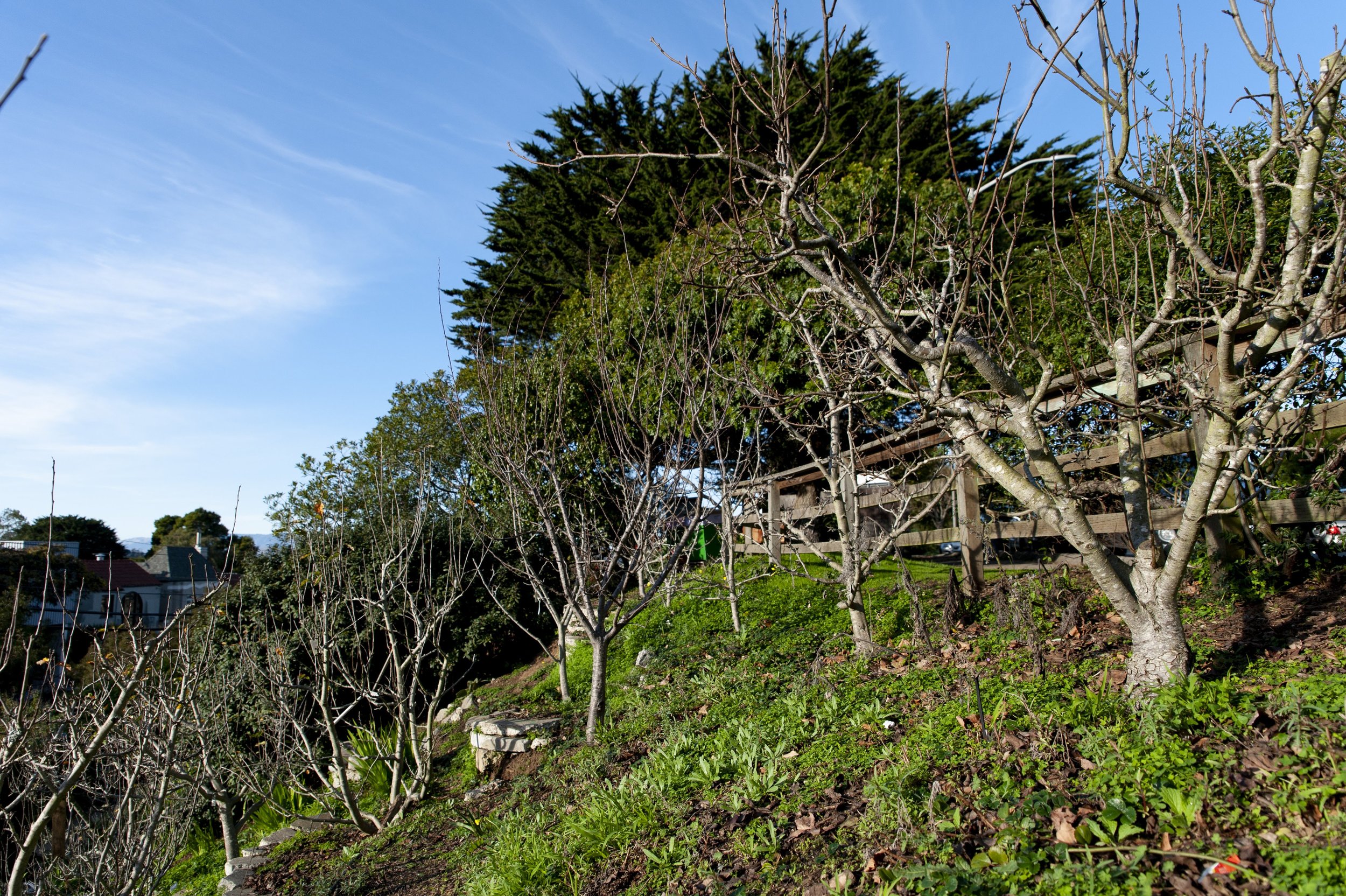Gardens with Good Bones
/Winter Beauties
Imagine a beautiful woman in her eighties. Maybe she teaches yoga, maybe she’s a retired professor among her rosebushes, maybe her gnarled hands and serene expression tell you that she is a great-grandmother who has worked hard all her life. The beauties of youth are gone, replaced by the beauty of well-lived age. The laugh lines by her eyes, the grace of her posture, the healthy glow of her peaceful smile all speak of a mysterious strength. The garden in winter should feel just like this: graceful, healthy, promising, lovely in its own way although the blush of spring is long gone.
Now we are approaching the longest night of the year, the winter solstice. The sun is low, even at noon. Shadows are long, days are short and our soil is beginning to cool. Some plants have finished their annual growth, and are still standing, tattered and embarrassed in the naked cold. Many deciduous trees have lost their leaves, and the rest will be gone after our first windy winter storm.
Deciduous trees that have lost their leaves in the winter expose the “bones” of the garden.
But there can be a special beauty in the winter garden. Cleared of last year’s growth, well-pruned, mulched and weeded, the garden in winter can still surprise and delight the eye. Longer sight lines open up as some trees lose their leaves. The permanent shapes of evergreen trees and shrubs give structure and stature while a variety of textures and foliage colors continue the beautiful effects of the flowering times of years. The branching patterns of deciduous trees are exposed now, and the healthy, open shapes of well-pruned trees are delightful. When a garden looks wonderful in midwinter, gardeners everywhere nod and say “that garden has good bones.”
Color in the Winter Garden
Dramatic effects at this time of year can come from colorful fruit and berries. Citrus shines as the colder nights begin to turn this year’s green lemons bright yellow. Berries on cotoneasters wink like Christmas lights, and feed overwintering birds. Some trees are still holding brightly colored fall leaves, such as persimmons and liquidambars (sweet gum). Many trees and shrubs from Mediterranean climates around the world begin to flower now, stimulated by the first rains of the year. Leptospermum, heathers, acacias, and rock roses are some of the shrubs and small trees blooming now or soon.
In the mild winters of the Bay Area we also get extra mileage from early spring flowering garden perennials. Cyclamen, primroses, hellebores and other early flowerers often start their show in fall here, as the soil cools and rains begin. In fertile soil these perennial bloomers will have flowers on them from now until spring, although flower production will slow down during the coldest days of the year.
Winter Beauty in the Toughest Garden Spots
Hellebores in particular are an invaluable plant in the garden now. All through the summer months they held their tough, dramatic foliage, making a solid statement in the drier and shadier parts of the garden. Now they are blooming happily, and they also perform well in sun in the foggy parts of town. Some hellebores can even take dryness between occasional summer waterings.
Drop by GFE to see the beautiful bear’s foot hellebore (Helleborus foetidus) blooming now. Enter the garden by the northernmost 7th Avenue gate and make your first left into the shade demonstration area. Notice some stairs leading up to a grassy area. To the left of the stairs, a happy Helleborus foetidus is blooming among ferns and foxgloves. (This tough plant even makes it into the East Bay MUD’s book Plants and Landscapes for Summer-Dry Climates.) Local gardeners know that finding the right plant for a dry shady spot can be very difficult, and this resourceful hellebore offers a beautiful part of the answer.
Bear’s foot hellebore (Helleborus foetidus).
Another plant family for use in difficult dryish shade areas is the Plectranthus family. Plectrathus argenteus ‘Silver Shield’ is blooming beautifully now by the southernmost 7th Avenue gate, to the left of the gate facing into the garden. To the right, notice Plectranthus ‘Mona Lavender.’
Plectrathus argenteus “Silver Shield.”
And don’t forget the coprosmas, also a boon in the winter garden. This plant family, with year-round colorful glossy foliage and arching or erect shapes adds interest and color-contrast in a border which may not have flowers now. While more brightly colored in full-sun, they grow happily in some shade as well, including dry shade. If you enter GFE from the south gate, and walk ten paces north you will find yourself between two beds. On the left, in the center of the bed is Coprosma ‘Rainbow Surprise.’ Although it is still small, this plant with its tough, tight, bright foliage cheers up even the greyest winter day. In the right hand bed, Coprosma ‘Roy’s Red’ is adding color and a strong upright shape to the winter border.
Coprosma “Rainbow Surprise.”
Maybe this winter is the right time for a bit of garden renovation and restoration. With a few strategic plantings, maybe your home garden can begin to develop “good bones.”
Have Some Fun
Now is planting time for Bay Area gardeners. The moist soil, and expectation of rainy months to come, make this the best chance to get plants well-established before the first months of summer drought. Next year promises to include water rationing for most of us, so use this opportunity to add drought tolerant plants to your garden, and remove those which you may not be able to water enough in the future. Keep in mind that even drought tolerant plants will need occasional water through their first summer, until their roots are deeply established. We’ll be talking more about establishing drought tolerant garden areas in the next update of “From the Border.” Good gardening until then.






